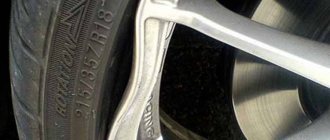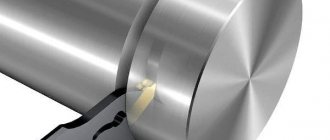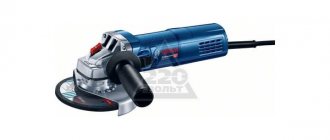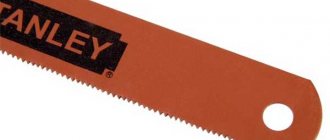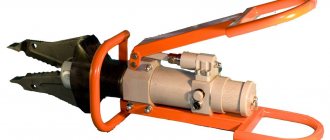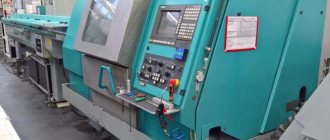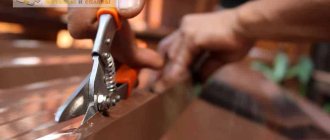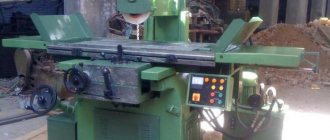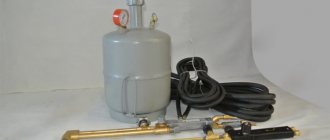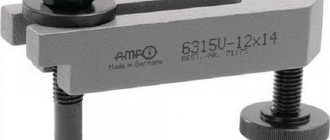Types of diamond blades for metal
Diamond blades vary in purpose, design, and manufacturing technology.
- If they are a round steel plate with a strip of diamond grains applied to its outer edge, they are called solid.
- If they have slots from the edge to the center for approximately 10–15% of the diameter, necessary for heat dissipation, they are called segmented. They can operate at high speeds.
- If an oblique notch is applied to the surface, then this is a turbo. They are more durable.
- A diamond cutting disc with slots and serrations is the most productive and is called turbo-segmented.
The marginal strip of grains is called the cutting edge. Diamond grains come in different sizes and are attached to metal in different ways. The size of diamonds determines work efficiency and working life. Large grains wash the metal being processed better, but wear out more quickly. Small ones work more accurately on metal, but their productivity is lower. But they have a higher working resource.
Diamond grains are attached to a steel plate in various ways: soldering, laser welding, and electroplating. The purpose of the tool also depends on the method of fastening. Discs with soldered grains are used in conjunction with water cooling. Galvanically bonded grains work well with soft materials. Diamond blades with welded grains are good for cutting hard metal alloys.
Diamonds are fixed in the working rim in a certain order. There are disks with a uniform distribution, when segments of the same length contain the same number of crystals.
But there are products in which diamonds are placed at a certain frequency (sandwich). They have greater productivity, exert less pressure on the tool, are better cooled and distribute forces more evenly.
When should you use diamond cutting technology?
In all cases where it is necessary to cut metal, diamond cutting is the most advantageous technology. In fact, the range of uses of this method of cutting metal is practically unlimited. After all, cutting equipment is quite compact, so work can be carried out in rather cramped conditions.
The demand for the service is quite stable, since almost any metal can be cut using this method. These can be durable steel structures used in construction, or fairly flexible parts made of copper or aluminum. Most often, diamond cutting technology is used for dismantling work. For example, when dismantling buildings, recycling vehicles, etc.
It should be noted that the use of this technology requires not only special tools, but also professional skills and experience. After all, the work must be carried out with a high degree of accuracy and in compliance with all safety standards.
The cost of diamond cutting cannot be called low, but still, if you need to cut metal structures, it is much more profitable to order work using this technology. These costs are completely justified, since the process will take place quickly and with a high level of quality - the cut will be accurate, and the edges of the cut parts will not require additional processing.
Main advantages and disadvantages
Diamond cutting discs are a universal tool. They are suitable for cutting not only metal, but also other materials of increased hardness: brick, reinforced concrete, foam concrete and others. The advantages of this tool include:
- increased geometric cutting accuracy;
- flat surface;
- almost silent operation.
The diamond blade does not exert pressure on structures adjacent to the cutting surface and does not change the structure of the material during operation. At the same time, significantly less time is spent on completing the work than when using other tools. The diamond wheel operates in the absence of a flow of sparks, and, as a result, there is no burning smell.
The cost of work using diamond blades should be calculated for each specific job.
The disadvantages of such a device include its high cost, but the working life of a diamond cutting tool significantly exceeds (almost 70 times) the working life of abrasive discs performing the same work. Equipment downtime is reduced by reducing the frequency of tool replacement. When using active cooling, it is possible to increase rotation speed and productivity. Throughout its service life, the tool retains its geometric characteristics.
Discs for home and professional use
As a rule, the entire range of discs presented in stores is divided into two categories: for professional use and for everyday use. Discs intended for household work are capable of performing the basic range of work, but with intensive use they quickly become dull and become unusable. The cost of these discs is low and quite affordable for ordinary builders.
Professional discs, in turn, have increased wear resistance, which significantly extends their service life. The price of such disks is several times higher than the cost of household disks. But if you have to do long daily work, you can’t do without them. When purchasing such a disc, you should pay attention to the presence of a hologram, this will help you avoid buying a fake.
When working with both household and professional discs, you must adhere to the information specified by the manufacturer and use the disc only with the materials for which it is intended.
Main characteristics and markings
One of the main characteristics of a diamond blade is its size - the outer diameter, on which the maximum cutting depth depends. For a universal grinder (angle grinder, grinder) there is a size range: 115, 125, 180 and 230 mm. Powerful metal cutting machines are equipped with devices with a diameter of 150, 300 or more millimeters. The mounting holes located in the center are used for installation on the mechanism shaft and have diameters of 22.2 or 25.4 mm. Like any product, a diamond cutting disc has a set of basic characteristics:
- type;
- size;
- the abrasive material from which it is made;
- the material for which it is intended for processing;
- grain;
- hardness;
- type of ligament;
- maximum speed;
- accuracy class;
- manufacturer.
These characteristics are encrypted in the form of alphanumeric markings, which are present on each diamond blade. The rules for labeling do not have strict regulations. Each manufacturer designs it differently, but the main characteristics are always present.
- Disk type. In theory, there should be a digital designation: straight profile;
- cutting;
- with recessed center.
- D – outer diameter;
- ceramic bond – V (K – old designation);
bakelite bond – B (B – old designation);
What does the marking on a diamond cutting blade mean? As an example, we consider the symbols printed on the tool of the Russian manufacturer ISMA flex (see figure).
2302.522.2 14A63H39 BU 80 m/s class 2 according to GOST 21963-82, where:
- 2302.522.2 – (DxTxH) – dimensions: diameter, thickness and diameter of the mounting hole.
- 14A – grade of grinding material – in this case, electrocorundum is normal.
- 63N – grain size – medium here.
- 39 – sound index.
- B – bond – bakelite.
- U – the presence of a reinforcing element – fiberglass reinforcement.
- 80 m/s – operating speed.
- Class 2 imbalance.
- GOST 21963-82 is a normative document.
Brands and cost of tools
The price of diamond wheels depends on many reasons:
- areas of use;
- characteristics;
- processing properties;
- functionality;
- brands.
A professional diamond disc from a well-known manufacturer helps guarantee continuous operation throughout the entire shift without overheating. More well-known brands in this market are:
- Distar;
- Bosch;
- INTERTOOL;
- Matrix;
- Hilti;
- Sparta;
- Bison;
- Center tool.
So, now you understand that diamond blades for concrete have different types and characteristics. They must be selected carefully depending on the purpose, characteristics of the material and other characteristics.
Diamond blade manufacturers
The following companies are deservedly popular among manufacturers:
- Bosch. German leader in the production of power tools and related materials.
- FIT. The Canadian company produces tools for professional and household use.
- Dremel American company producing high quality power tools.
- Husqvarna. A Swiss company that is known for its high performance and level of durability.
- MESSER. A Korean manufacturer that produces a wide range of attachments for grinders.
- Zubr. Russian company producing power tools and cutting equipment.
- Hitachi Power Tools, Luga Abrasiv Extra. Has excellent value for money.
Diamond cutting discs are an effective tool with high productivity and provide comfortable conditions when performing work. Do you have experience working with them? Be sure to share it in the comments to this article.
Manufacturers and prices
The range of prices for carbide blades for metal is enormous; the main thing here is to decide for which tool and what metal you will cut and make a choice based on this. The cost of wheels for aluminum ranges from 1,000 to 4,000 rubles, for steel from 3,000 to 20,000 rubles. There are also a huge number of manufacturers. Each company that produces circular or miter saws necessarily produces consumables for them, or buys products from third-party manufacturers and sells them under its own brand. It should be taken into account that there is no single standard for the mounting holes of disks and it is beneficial for manufacturers to make them different so that their tools can be supplied with the same consumables.
It’s pointless to talk about which discs are better and I won’t list the brands of major manufacturers. I can tell you from my own experience that I have used HILTI and ATAKA discs; the former cut better, but they are also more expensive. Reading reviews on the Internet, I heard a lot of good things about disks manufactured by CMT orange tools. When choosing disks, pay attention to it.
How do diamond blades work?
The diamond blade grinds rather than cuts the material. The blades typically have rectangular teeth (segments) containing diamond crystals embedded throughout the segment for grinding through very hard materials.
Bond is a term used to describe the softness or hardness of the powdered metal used to form the segments. Powdered metals hold diamonds in place. The bond controls the wear rate of the diamond segments, allowing new diamonds to be exposed to the surface to continue grinding with a “sharp” edge.
An important step in blade selection is matching the blade's bond with the specific material being cut.
Additional factors to consider are the type and power of equipment used and the availability of water. Harder materials require a softer adhesive segment to ensure continuous diamond exposure.
Softer materials, such as asphalt or freshly poured concrete, can use a harder segment to resist the increased wear caused by soft, abrasive materials.
In addition, the size, viscosity and concentration of diamonds must also match the nature of the material being cut. For example, when cutting hard materials, diamonds must be smaller in size.
There are other factors to consider when choosing a diamond blade for a specific application. These include the type (manufacturing method) of the blade, the presence of water during the cutting process, the power of the saw and the permissible noise level generated by the saw. For example, if the horsepower of the sawing machine is large, the concentration of diamond in the diamond blade must be higher, or the bond must be stronger.
A higher concentration of diamonds will reduce the impact on each individual diamond in the work, while a stronger bond will hold the diamonds more firmly.
